
Abella de la Conca is a relatively new sport climbing destination which is starting to attract more and more climbers seeking Spanish limestone without the crowds. In this article Peter O'Donovan gives his account of climbing and relaxing in this rustic Spanish village.
Quick Facts:
Grade Range: 3 - 9a and above
Route Length: 25-35m
Style: Vertical and slabs mainly with some overhanging sectors
Number of Sectors: 15
Top Routes (4+ - 8a): 5: Pre school, 5+: Divendres, 6b: Honey Badger (6b), 6b: Meteorito RH (6b), 6c: Illian tu vas tomber, 6c+: Hilfe (6c+), 7a+: Caçadors de Parets (7a+), 7b+: La Bella de la Conca L1+L2 (7b+), 7b+: Per Instint, 8a+: Pepito
June 2014. We're driving up a narrow dead-end road leading to Abella de la Conca — a tiny but splendidly situated village in the Lleida pre-Pyrenees in Catalunya, Northeast Spain.
As we get close, the number of parked cars and vans on the roadside is beyond anything I've ever seen here before, but that's hardly surprising, for this is the weekend of the 'Trobada' — the first ever organized meeting of climbers in Abella de la Conca.
The event has been set up by French climber Nic Durand and his English wife Eleanor Moore, who together have spent the past three years converting one of the village houses into a Refugi (although 'El' says it would only have taken 18 months if Nic hadn't spent so much time equipping new routes on the stunning walls surrounding the village!).
I usually drive right up into the 'plaça' but on this particular morning our way is blocked by a couple of elderly blokes about two hundred metres short of our destination. I know Nic's been fretting about how the appearance of dozens, possibly hundreds of climbers will go down with the handful of ageing resident villagers and my sense of unease grows as I wind down the window. I needn't have worried: "Welcome to Abella de la Conca" says the one with the walking stick. "Are you just here for the day or staying for the evening's festivities?" I can't help smiling. Nic's not only placated the locals, he's actually involved them.
The two stewards direct us to the 'day visitors' parking area and then we walk up to the village 'square' (about half the size of a tennis court) to see the man himself sat behind a wooden table taking registration fees — most of which, it transpires, are to be paid to the villagers in return for the evening's food and wine, with the remainder going into the bolt fund.
Looking around the crowded courtyard I study faces, trying to gauge how far people have come from. The majority are almost certainly Spanish or Catalan, but there are definitely a few 'guiris' (foreigners) amongst the mix, including a charming (as I later discover) Japanese couple.
Not wanting to disturb Nic from performing his monetary duties, I just sit on a low stone wall at the back of the square and start reminiscing.
My first visit to Abella de la Conca was quite some time ago — '93, or maybe '94, I can't remember exactly. I'd married a Catalan woman in the late 'eighties and, having quickly discovered how good the local climbing was, I never, ever complained about trips from England to see the in-laws.
A small piece about Abella had recently appeared in the Spanish climbing magazine, Extrem (now defunct). At this time guidebooks to climbing in Spain were virtually non-existent and as I very rarely met any local climbers, let alone knew them, these magazine articles were my meat and bread, and I'd hungrily scan them for new places to go. A couple of fuzzy black and white pictures, a few rudimentary topos, and the most basic of approach information was often all it took for me to drag the missus off into the back of beyond. On good days the approach info would be spot on (very rare) and we'd find the crag, do a few climbs and return home satisfied. On bad, we'd spend hours driving along barely navigable tracks or bushwhacking painfully through dense undergrowth without seeing anything remotely climbable, only to find later that "left" should have been "right".
That first day in Abella there was a bit of both, but when I did finally get on the rock the quality of the routes just blew me away — long, sustained pitches on boilerplate Verdon-like limestone. And the place! Crests and towers jutting from the hillside, dwarfing the tiny village built at (and sometimes into) the base of the cliffs.
I came back regularly over the next few years, eventually exhausting the options of what I was capable of, but I never once saw another climber. At the time I found this inexplicable, but I now realise that I was witnessing the general decline in popularity of the sort of route Abella then offered i.e. 'only' vertical but on little holds, as opposed to madly overhanging on big jugs.
My love affair with Abella came to fruition in 2006 when, having met and climbed with Pep Boixados (protagonist of much of the earlier development) and discussed the potential for new routes in the area, I went on to equip three routes on one of the most impressive pieces of rock in the zone, one of which, I'm proud to say — Caçadors de Parets (7a+) a 45m 7a+ — has become something of a modern classic.
Things then went a little quiet for a few years (and for Abella that means virtual abandonment) before a couple of ex-pat Brits, Oli and 'G' (don't ask) bought a dilapidated house in the village and renovated it to run their 'Climb Catalunya' business from. When Nic and El joined, and later took on the enterprise, what had been just a trickle of new routes under Oli and 'G's auspices suddenly became a deluge. Walls of all angles were cleaned and bolted, resulting in dozens and dozens of new climbs: sure, some were the standard Abella fare of vertical crimp-fests, but there were also rough, slabby grade Vs and eighth grade overhanging tufas. One of the new high-grade sectors, El Forat dels Lladres (The Theives' Hole) — a complex of caves and arches set high on the hillside — is probably the most beautiful rock formation I've seen in recent years. Others joined in the work, many of them friends and guests of Nic and El, invited to stay a few days and, if inclined and able, equip a route, or two. There are now 300 climbs in the zone, ranging from V to 8c+.
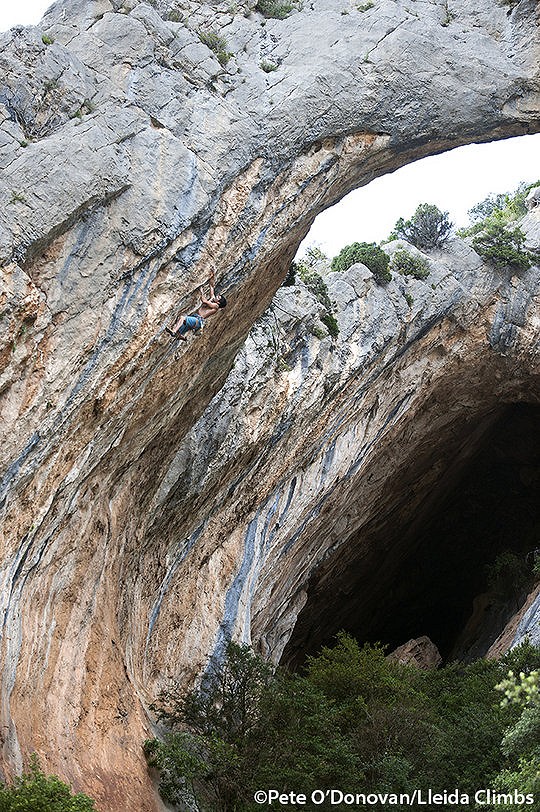
I suddenly realize that someone is calling my name. Nic has finished collecting funds and is now distributing topos and advice about the best sectors to visit in what is one of the warmest late-springs in the region for many years. Fortunately Abella isn't just a one-trick, south-facing pony, and most people head for the shady walls. Others just hang around the square for most of the day, chatting and meeting new people, as well as sampling the locally produced cheese and beer (easily enough to put a smile on most faces) from stalls erected in Nic and El's garden.
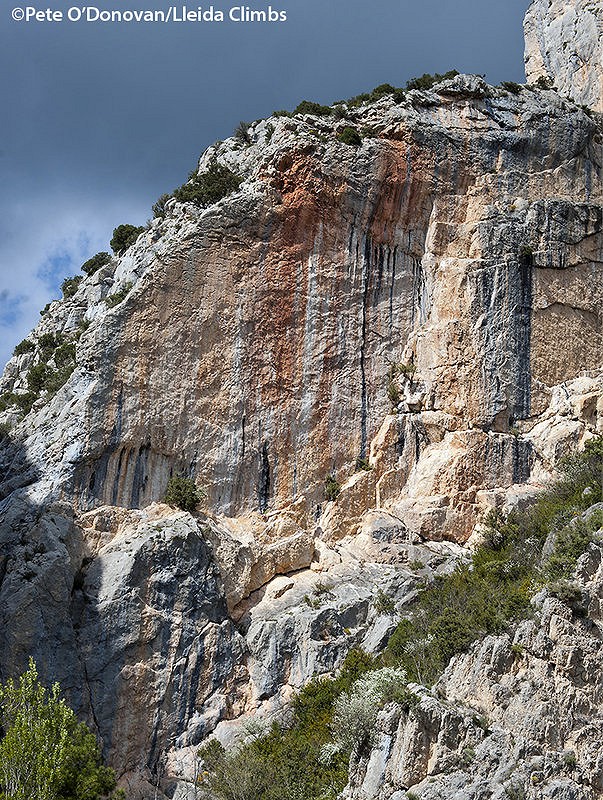
The evening meal — cooked and served by the villagers and eaten on makeshift tables set up in and around the square was apparently (circumstances dictated that my wife and I had to give it a miss) a great success, young hardcore rock athletes sharing locally produced wine and sausages with folk old enough to remember the Spanish Civil War.
During my time in Catalunya I've often witnessed a certain animosity between climbers and locals (natural enough when you consider their [usually] vastly different outlooks on life) so what happened in Abella in June was something quite remarkable. I really hope it stays this way!
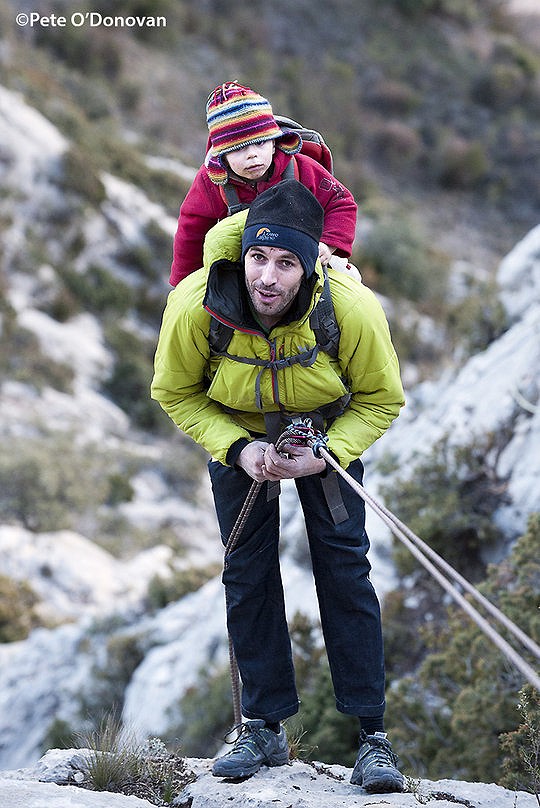
Logistics
When to Go
As mentioned earlier, Abella offers sectors of varying orientation, so year-round climbing perfectly possible. Practically speaking, however, I would recommend October to May as the optimum period for visiting, with the proviso that a couple of sectors are bird-banned in the spring.
How to Get There
Get a cheap flight to Reus, drive north on the C-14, passing through Tàrrega, to reach Artesa de Segre (don't forget to call in at Rosa Serra's bakery here for some of her wonderful pastries). From Artesa take the L512/C1412b to Isona, then the L511 to Abella — about 2 hours in all. From Barcelona, drive west on the A2, turn off at Tàrrega and continue as before.
Accommodation Advertise here
No Premier Listings found in this area
Nic and El's Eco-Refugi .
Guidebooks
Lleida Climbs but Nic and friends have already opened several new sectors and dozens of new climbs since this book was published in November 2014. Full details of the new stuff appears on the Lleida Climbs blog, as well as on Nic's own abellaclimb site.
Instructor/Guides Advertise here
No Premier Listings found in this area
Outdoor Shops Advertise here
No Premier Listings found in this area
Other Activities
Mountain Biking, Walking, Bird Watching. This is not the place to come for wild nightlife, but if you enjoy relaxing in beautiful surroundings on your rest days, you won't be disappointed.
Travelling on
Abella lies smack in the middle of some of the best climbing in Lleida (and therefore the best in Spain) with zones such as Terradets, Vilanova de Meià, Collegats and Camarasa all within a 40-minute radius.
Note: Nic wishes me to extend his thanks to the The Spanish importers of Vaude and Edelrid, who provided valuable support and encouragement to the 'Trobada' event.

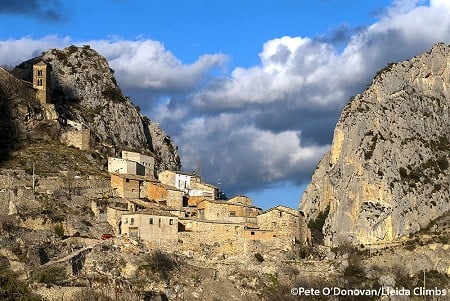

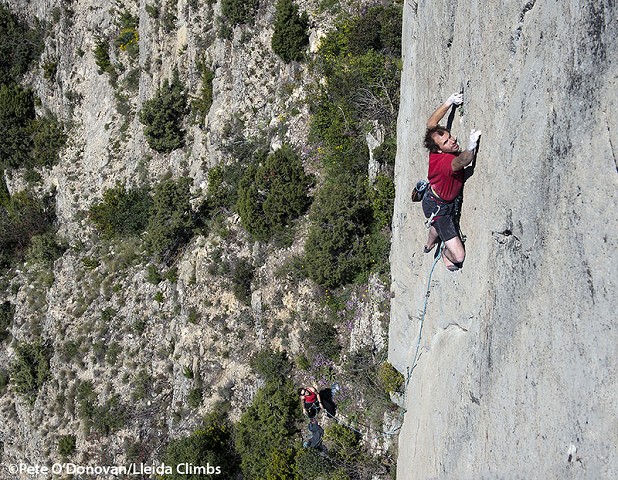
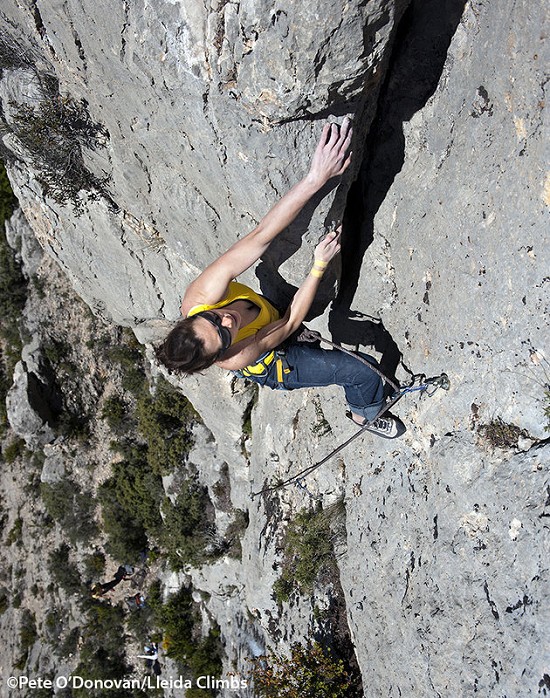


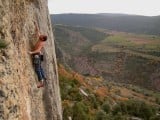
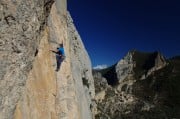






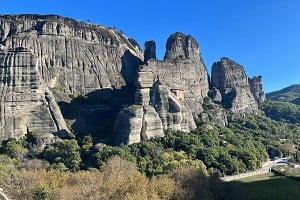
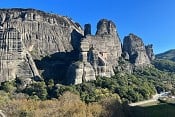





Comments